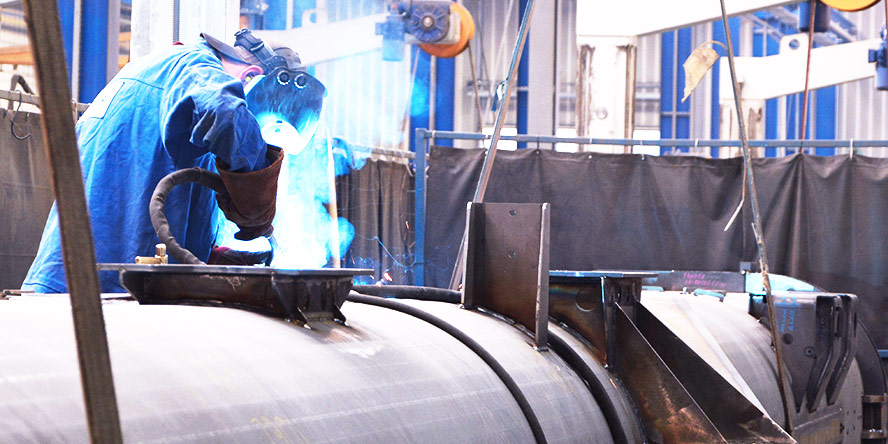For the factory specialising in the production of steel structures the WOLFF GROUP performed an audit of the condition of the existing ventilation system.
As part of the order, the WOLFF GROUP engineers carried out a site inspection at the production site. The audit included a survey of the existing production line components and the ventilation system for routing of ventilation ductwork. Drawings were drawn up containing technical data of plant components along with the ventilation system route and as well as descriptive documentation.
Performing a detailed analysis made it possible to assess the condition of the existing ventilation system and present solutions for improving its operation based on the existing legislation, health and safety rules and regulations and the threshold limit values for the workplace. The completed audit will certainly allow the plant owners to effectively and quickly improve the condition of ventilation and exhaust systems in the plant, thus improving the working conditions of employees.
The production of steel constructions is a complex, multi-stage process. The first stage is pre-treatment and thermal cutting. The further stages involve erection, welding and anti-corrosion protection.
Metalworking inherently entails emission of dust and gas. The greatest amounts of pollution are released during welding. The chemical composition of welding dust depends on the type of materials welded, as well as the methods and welding process parameters. The basic components of the dust generated during this operation are iron, manganese, silicon dioxide, chromium compounds, nickel, molybdenum, niobium, sodium, potassium, calcium and magnesium. All these pollutants have to be removed from the workplace. For this purpose, ventilation and local exhaust systems are used. Effective air-cleaning systems are therefore necessary at the plant. They have a significant impact on safety and improve the comfort of work.





